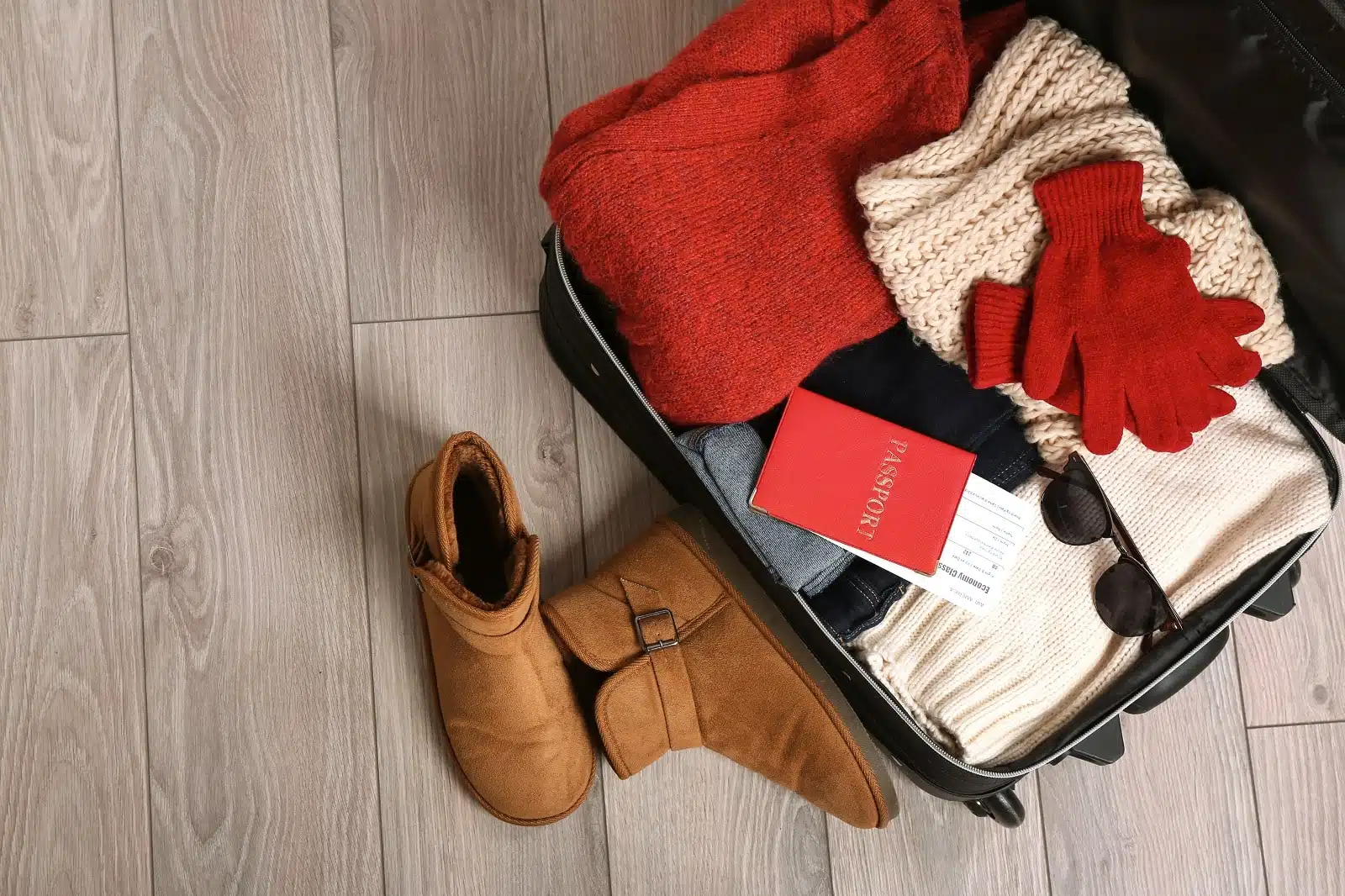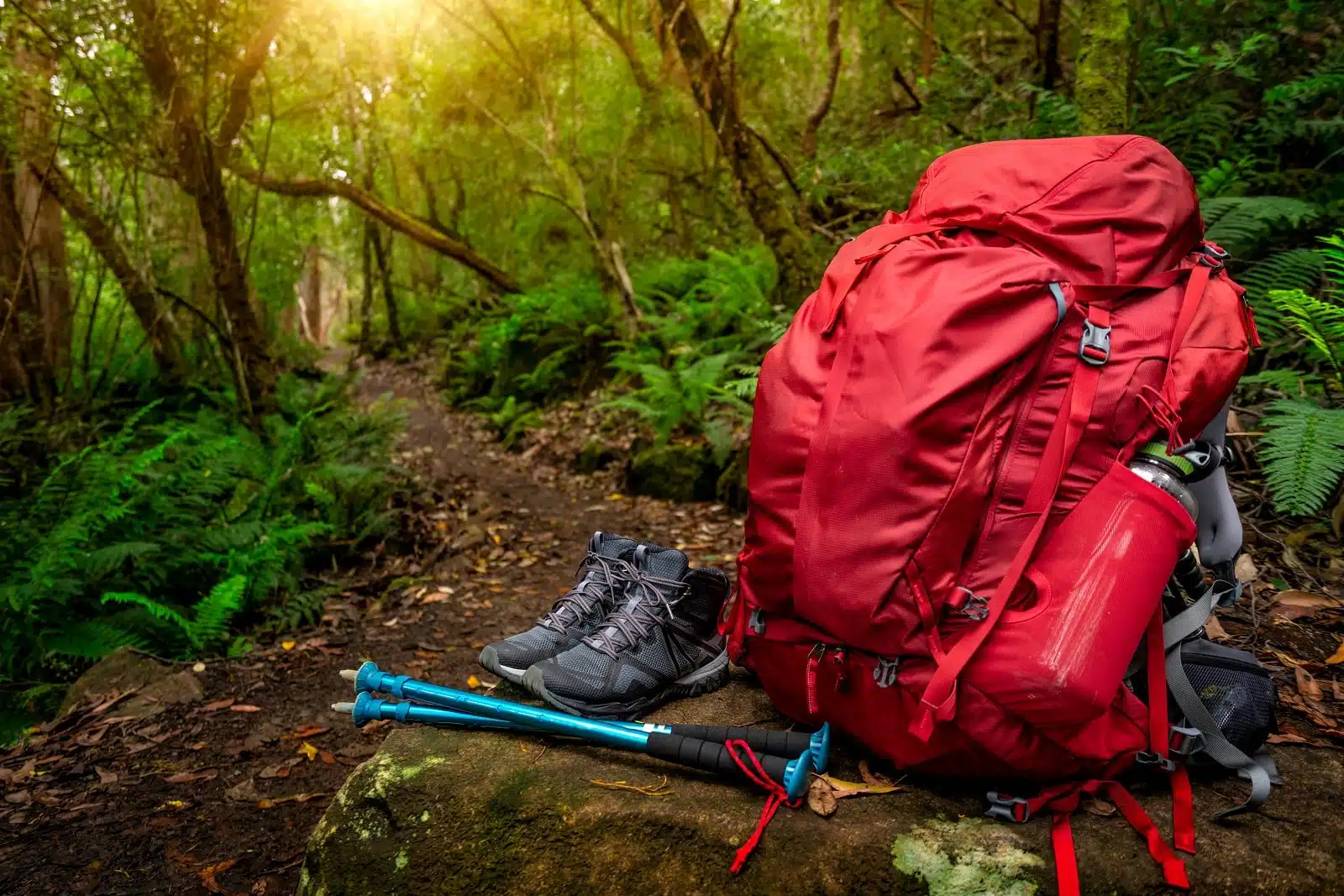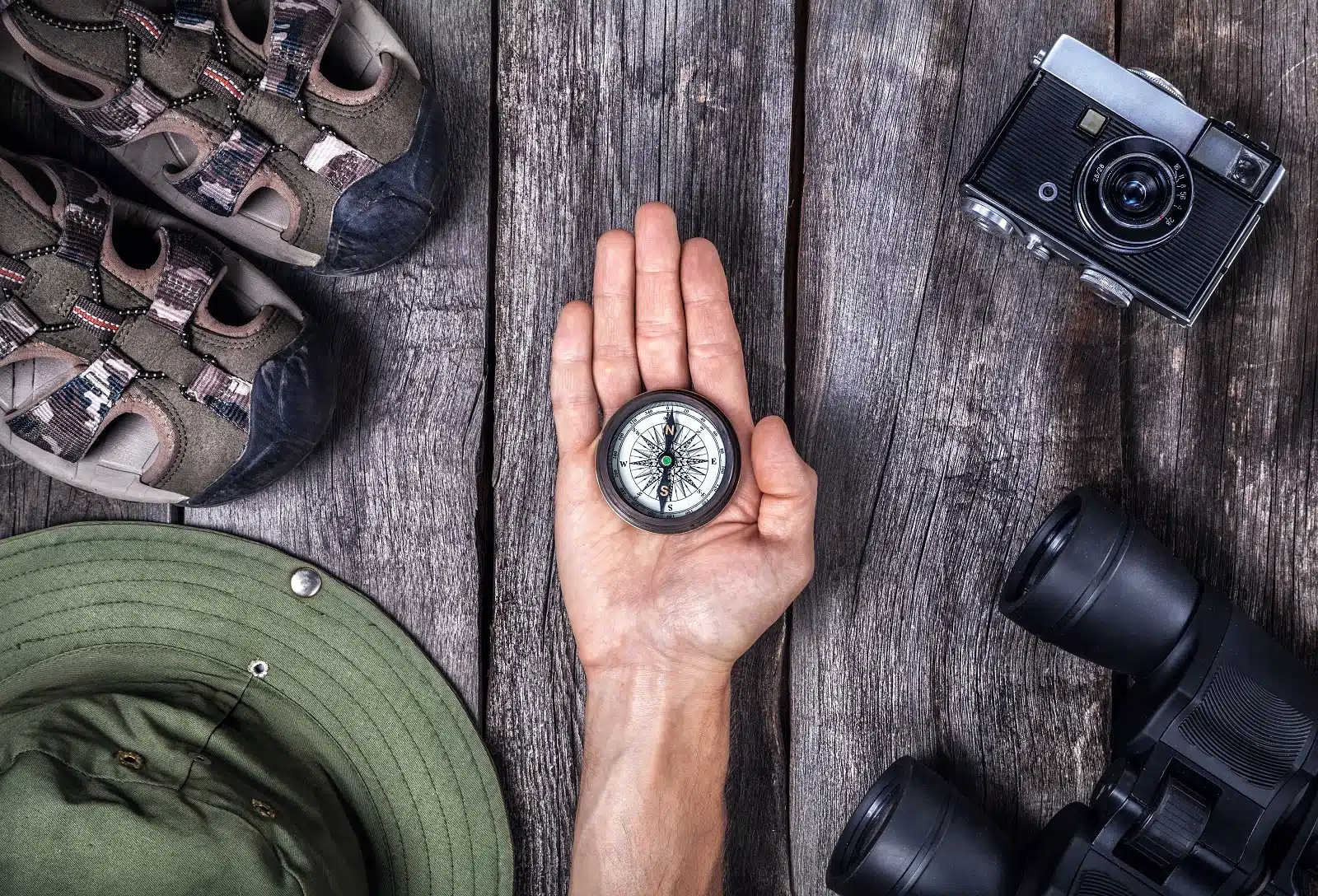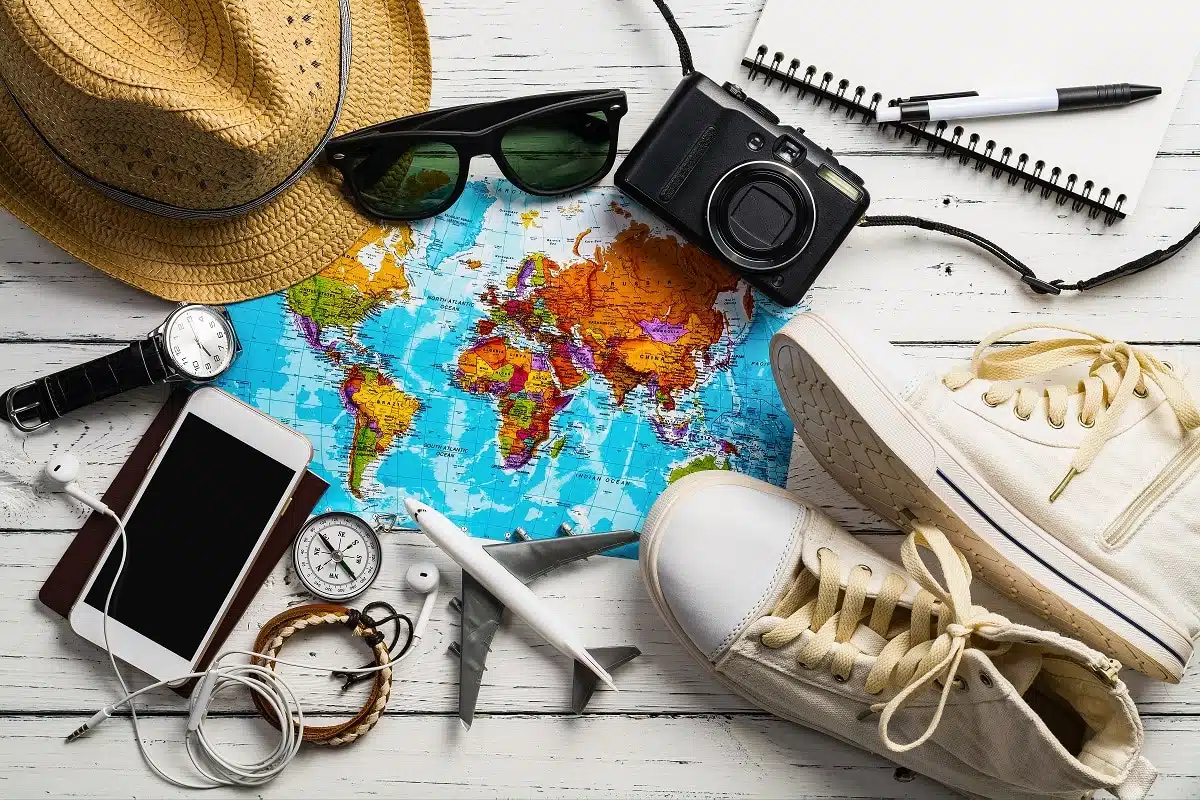Traveling across different climates can be a challenge when it comes to packing. Whether you’re venturing into the icy Arctic, the humid tropics, or the variable conditions of the mountains, being prepared is key. This guide provides essential packing tips for various weather conditions, ensuring you’re equipped to comfortably enjoy your adventures, regardless of the climate.
1. Tropical Climate

Image Credit: Shutterstock / Izabela Magier
When packing for tropical climates like Southeast Asia or the Caribbean, your primary goal is to stay cool and comfortable. Choose lightweight, breathable clothing made from materials like cotton or linen. Long-sleeved tops and pants can protect you from the sun and mosquitoes. A good quality, water-resistant sunscreen, a wide-brimmed hat, and UV-protective sunglasses are crucial to protect against intense sun exposure. For footwear, breathable sandals or waterproof shoes are ideal. Remember to pack a lightweight raincoat or poncho for sudden downpours, common in tropical regions.
Insider’s Tip
Choose clothing in light colors to reflect the sun’s rays and stay cooler.
2. Desert Climate

Image Credit: Shutterstock / Ground Picture
Desert environments, such as those in the Middle East or North Africa, require you to protect yourself from extreme heat and sun exposure during the day and potentially cool temperatures at night. Pack light-colored, loose-fitting clothing that covers as much skin as possible. A high-quality sun hat with a wide brim and UV-protection sunglasses are vital. Include a lightweight scarf or bandana for sand protection and a good SPF sunscreen. For hydration, bring a durable, insulated water bottle. Comfortable, closed-toed shoes are important to protect your feet from hot sand and rough terrain. For cooler evenings, a light jacket or sweater is advisable.
Insider’s Tip
Wear closed-toed, breathable shoes to protect your feet from hot sand and rough terrain.
3. Arctic and Antarctic Climates

Image Credit: Shutterstock / Africa Studio
Preparing for polar regions like the Arctic and Antarctic involves layering for extreme cold. Start with thermal base layers (wool or synthetic) and add fleece or wool mid-layers for insulation. Your outer layer should be waterproof and windproof. Insulated, waterproof boots are essential, along with thermal socks, waterproof gloves or mittens, and a warm beanie or balaclava. Sunglasses with UV protection are necessary to prevent snow blindness. Pack a sturdy, insulated water bottle, and consider bringing high-energy snacks.
Insider’s Tip
Pack chemical hand and foot warmers for extra comfort during long outdoor excursions.
4. Mountainous Climate

Image Credit: Shutterstock / Ruslan Galiullin
In mountainous areas like the Rockies or the Alps, weather can change rapidly, so layering is essential. Waterproof and breathable clothing is key. Pack moisture-wicking base layers, insulating layers like fleece or down jackets, and a waterproof outer shell. Good quality hiking boots, thermal socks, a warm hat, and gloves are a must. A daypack is useful to carry extra layers, water, and snacks. Also, consider packing a headlamp, as daylight can be unpredictable in mountainous terrains.
Insider’s Tip
Bring a compact first-aid kit for minor injuries on the trail.
5. Temperate Climate

Image Credit: Shutterstock / Pixel-Shot
For temperate climates with moderate temperatures, versatility in your clothing is key. Pack a mix of short and long-sleeved tops, a couple of sweaters or fleece jackets, and a lightweight, waterproof jacket. Comfortable walking shoes are essential. An umbrella or a rain hat can be useful for unexpected showers. You can adjust layers as temperatures change throughout the day.
Insider’s Tip
Choose clothing that can be mixed and matched to maximize outfit combinations.
6. Rainforest Climate

Image Credit: Shutterstock / Summit Art Creations
In rainforest environments, like the Amazon, pack lightweight and breathable clothing that covers your arms and legs to protect against insects and dense vegetation. Quick-dry fabrics are preferable. Waterproof hiking boots or shoes, a waterproof jacket or poncho, and a hat are essential. A high-DEET insect repellent is necessary, as are zip-lock bags or waterproof pouches to protect your electronics and important documents from humidity.
Insider’s Tip
Pack zip-lock bags to keep electronics and important documents dry in humid conditions.
7. Savannah Climate

Image Credit: Shutterstock / Pikoso.kz
For savannah climates, as found in regions like East Africa, choose breathable, light-colored clothing to stay cool and protect against the sun. Long sleeves and pants will also protect you from insects. A broad-brimmed hat, sunglasses, and comfortable walking shoes or boots are important. Include binoculars for wildlife spotting and a high-quality camera with a zoom lens to capture distant animals.
Insider’s Tip
Wear layered clothing for early morning safari drives, which can be chilly.
8. Mediterranean Climate

Image Credit: Shutterstock / Leszek Czerwonka
Visiting Mediterranean destinations like Greece or Italy requires packing for warm days and cooler evenings. Include light and airy daytime wear, swimwear, a light jacket or sweater for the evenings, and comfortable walking shoes for exploring. Sun protection is essential, so pack sunscreen, a hat, and sunglasses. A lightweight, foldable daypack is useful for day trips and beach outings.
Insider’s Tip
Bring a lightweight, foldable daypack for day trips and beach visits.
9. Subarctic Climate

Image Credit: Shutterstock / Pixel-Shot
Layering for varying conditions is important in subarctic regions, such as parts of Scandinavia. Thermal base layers, wool or fleece mid-layers, and a waterproof, insulated outer layer are essential. Warm, waterproof boots, wool socks, gloves, and a hat are necessary to protect against cold temperatures. Packing a thermos can be a nice addition to keep your drinks warm during outdoor activities.
Insider’s Tip
Bring a compact, insulated travel mug to enjoy hot beverages during your outings.
10. Urban Climate

Image Credit: Shutterstock / Nesolenaya Alexandra
Traveling to urban environments requires packing for both comfort and versatility. Depending on the climate, include a mix of casual and more formal wear suitable for day-to-night transitions. A stylish, weather-appropriate coat or jacket, comfortable walking shoes, and an umbrella or lightweight raincoat for unpredictable weather are key. A portable charger and a secure, stylish bag for your belongings will keep you prepared and safe during city explorations.
Insider’s Tip
Choose a crossbody bag or a backpack with security features for city exploring.
The Bottom Line
Packing effectively for diverse climates means balancing practicality with comfort. By focusing on layering, protecting against specific weather elements, and choosing versatile pieces, you can enjoy your travels to the fullest, no matter the destination’s weather. Remember, being well-prepared allows you to focus on the incredible experiences each unique climate has to offer. Happy travels!
More From The Green Voyage
12 Best Practices for Sustainable Travel in 2024 – How to Travel With Minimal Environmental Impact
Unlocking Hotel Perks – A Traveler’s Guide to Maximizing Hotel Reward Programs for Optimal Benefits
Travel Hacks for Frequent Flyers – 6 Tips and Tricks to Make the Best of Air Travel
The post Travel Smart in 2024 – 10 Essential Packing Tips for Every Climate first appeared on The Green Voyage.
Featured Image Credit: Shutterstock / I am Kulz.
